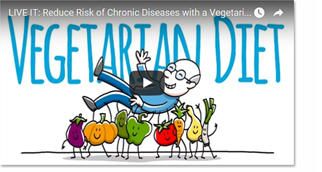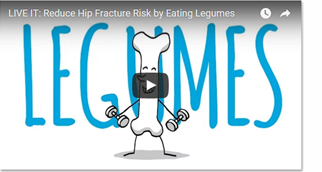
Dear Members:
 Last month my wife, Pauline, and I traveled to Florida for a few days to visit dear friends on a short vacation. We had a fantastic time: The weather was perfect, the fishing sublime, and our gracious hosts made us feel totally relaxed and at home in their beautiful townhouse at the exclusive Ocean Reef Club in Key Largo. Six days went by in a flash, but not before providing us with wonderful memories and a bonus encounter on our flight home.
Last month my wife, Pauline, and I traveled to Florida for a few days to visit dear friends on a short vacation. We had a fantastic time: The weather was perfect, the fishing sublime, and our gracious hosts made us feel totally relaxed and at home in their beautiful townhouse at the exclusive Ocean Reef Club in Key Largo. Six days went by in a flash, but not before providing us with wonderful memories and a bonus encounter on our flight home.
On the Southwest flight from Fort Lauderdale to Providence, RI, Pauline and I sat in aisle seats across from each other. Next to Pauline was a couple in their early 50s. The husband was affable and articulate. He told us the story of his incredible journey, which we share with you in the Final Thoughts segment of this month’s BOB Tales.
In short, this man was morbidly obese at one time and, after many years of trying to lose weight and get healthy, he knew it was time to change direction. After leading a sedentary life for 47 years, and doing little more than eating whatever tasted good, he made a commitment to eat healthy and exercise. At that time, he couldn’t run more than 10 yards without collapsing and gasping for air. Ten months later, he had lost 114 pounds and he ran the Boston Marathon!
He produced a short video of his journey. The video has gone viral with close to eight million views to date. You can read his story and find a link to his video in the Final Thoughts section of this month’s BOB Tales. His accomplishments will astonish you.
His video will warm your heart. He may also inspire you to take-on and conquer any challenge life has presented to you.
Dr. Lynn Martell at Loma Linda University Cancer Center often reminds us, “There are no coincidences.” I suspect we were destined to sit next to this gentleman, get to know him, and learn about his inspirational story so we could learn from it and share it with others.
I hope you enjoy this month’s newsletter. As always, we welcome your feedback and suggestions for future newsletters. Just send an email to [email protected].
Bob Marckini
To print the BOB Tales newsletter or view the newsletter with a larger font size, click here for the PDF file.
In This Issue:
- LLUCC reports on hypo-fractionation clinical trial
- Promising news for veterans
- Progress in treating advanced, metastatic prostate cancer
- Success in treating oligometastatic prostate cancer
- Prostate cancer not the only tumor site being denied coverage
- Recent spate of insurance denials for proton therapy, but Medicare still in!
- Pacific Northwest BOB reunion and golf event, Portland, OR
- Great two-minute health tip videos
- Interesting survey on side effects
- Prostate problems: Recognize the warning signs
- Drugs, supplements, and side effects
.jpg)
Loma Linda University Cancer Center Reports on Hypo-fractionation Clinical Trial
The current standard prostate cancer proton treatment protocol at the James M. Slater M.D. Proton Treatment and Research Center is a radiation dose of 81CGE in 45 fractions (treatments) over nine weeks. In February 2009, Loma Linda University Cancer Center (LLUCC) began a clinical trial to determine if the excellent disease-free survival and toxicity (side effect) results of the standard protocol could be obtained using a protocol that reduces overall treatment time by delivering fewer, but higher-dose treatment fractions (i.e. hypo-fractionation).
The schedule employed in this protocol was 60 CGE delivered over 20 fractions during a four-week period. The 60 CEG dose over 20 fractions was determined to be biologically equivalent to 81 CGE over 45 fractions.
Results
Preliminary results from the first 100 patients showed only one patient with biochemical failure and only one patient with grade 3 or higher toxicity (side effects).
Conclusions reported from these preliminary results indicate that hypo-fractionated conformal proton beam radiation therapy of prostate cancer results in control and toxicity outcomes consistent with the current institutional standard. “Hypo-fractionated radiotherapy has shown not to be inferior to standard fractionated radiotherapy in terms of acute and late toxicity and biochemical failure,” according to the report.
This is significant in that treatment duration may be reduced from nine weeks to four weeks and costs may be reduced by as much as 50 to 60 percent, allowing more patients to take advantage of this treatment.
Final conclusions from this clinical trial must await accrual and follow-up of all 300 patients.
Progress in Treating Advanced, Metastatic Prostate Cancer
.jpg) We live in an age where medical advances are happening faster than ever. Treating advanced and metastatic prostate cancer is no exception. Drugs and therapies exist today that were unheard of 10 years ago. And work is under way to develop new techniques for treating aggressive prostate cancer.
We live in an age where medical advances are happening faster than ever. Treating advanced and metastatic prostate cancer is no exception. Drugs and therapies exist today that were unheard of 10 years ago. And work is under way to develop new techniques for treating aggressive prostate cancer.
Dr. Charles “Snuffy” Myers is a world-renowned expert in treating recurrent, advanced and metastatic prostate cancer. We subscribe to his newsletter, formerly called Prostate Forum, now called Prostatepedia.
In his March 2016 issue (Volume 1 No. 6), Dr. Myers focuses on a growing range of drugs used to treat advanced and metastatic prostate cancer and addresses the questions of which drugs to use first and whether to use drugs in combination or in sequence.
Dr. Myers points out that results can vary widely when combined. They can be additive or antagonistic. For example, combining two drugs that may have a 20 percent response rate could possibly produce a result where each
has a 40 percent response rate. And in other cases, combining two drugs with a 20 percent response rate could result in a combined result of only a 10 percent response rate.
Dr. Myers also points out that dangerous combinations can also occur when patients add supplements that can have serious and potentially lethal interactions with prescription drugs. As Myers points out, “Many believe that supplements are safe because they are ‘natural.’ This isn’t true: Some of the most dangerous poisons come from natural sources. Our concerns about combining drugs holds true for combining supplements.” In Myers’ publications, he frequently expresses concerns about quality control in the supplement industry. “Never add supplements to cancer drugs on your own,” he says.
In the March issue, Prostatepedia explores combining and sequencing drugs for prostate cancer with Dr. Maha Hussain, Dr. E. David Crawford, and Dr. Daniel James George, and reviews clinical trials combining a vaccine with a checkpoint inhibitor with Dr. Mark Stein.
Prostatepedia is published and distributed by Rivanna Health Publications. You may purchase the back issue of this article, and other articles, in PDF format for $9 each.
Success in Treating Oligometastatic Prostate Cancer
In a recent podcast, Dr. Myers also discussed the treatment of oligometastatic prostate cancer. Patients with oligometastatic cancer typically have cancer that has spread outside the prostate, but is limited to just a few spots in the body. This cancer, according to Myers, may be treatable with surgery or radiation. There is much controversy on this subject in the medical community and very little data from clinical trials. However, Dr. Myers has treated many cases of oligometastatic disease quite successfully, giving patients many years of life after treatment. If the cancer does come back after treatment, it often comes back in a much less aggressive form, which, according to Dr. Myers is much more easily treatable.
Myers places oligometastatic prostate cancer into three categories: 1) lymph node only,
2) bone lesions only, and 3) both lymph node and bone lesions. He feels a patient is a candidate for curative treatment if there are five bone lesions or fewer or if the affected lymph nodes are accessible for surgery or targeted radiation.
In the video, Dr. Myers talked about the difficulty of treating cancerous retroperitoneal lymph nodes with conventional radiation. The collateral damage can be quite significant. He did, however, note that his patients with oligometastatic cancer in retroperitoneal lymph nodes have been successfully treated with proton beam radiation with virtually
no side effects.
We will be hearing more on this subject in the future and will report on developments as they are announced.
Prostate Cancer Not the Only Tumor Site Being Denied Coverage
This story was reported on KIRO 7 news. Ronnie Castro, a young father of three young children, had brain cancer. Surgery removed most of the cancer, but he needed radiation to destroy the rest of it. His medical insurer, Lifewise, which is part of Premera Blue Cross, called proton therapy for adult brain cancer “experimental.”
Since the tumor was so close to the brain stem, Ronnie’s doctors were reluctant to use conventional radiation because they feared collateral damage. Lifewise, incidentally covers proton therapy for treating tumors in children.
Ronnie went through three levels of appeals and lost. He then had to come up with $39,000 to pay for his proton treatment at Seattle Cancer Care Alliance Proton Therapy Center in Washington state. Family and friends raised more than enough money through an online donation page.
Ronnie has had proton treatment, which destroyed most of the cancer. He is now suing Lifewise. His lawyers feel he has a good case and that Lifewise is denying proton therapy only because it is more expensive than conventional radiation. “If proton therapy is superior for treating tumors in children’s brains, and more than 100,000 patients have been treated with proton therapy over the past 50 years,” his lawyers argue, “it cannot be considered ‘experimental.’”
You may recall from last month’s BOB Tales, one presenter at the National Proton Conference who spoke about medical insurers denying coverage for proton therapy had a slide titled, “It’s all about the Benjamins, Baby.” Certainly if proton therapy cost the same as conventional radiation, Ronnie’s insurer would not have denied coverage.
Stay tuned. We will let you know how this story turns out.
 Recent Spate of Insurance Denials for Proton Therapy, But Medicare Still In!
Recent Spate of Insurance Denials for Proton Therapy, But Medicare Still In!
Article contributed by BOB member, Pat Greany, Ph.D., retired USDA Research Entomologist and Courtesy Professor at the University of Florida
As you know, a growing number of private insurers are denying proton therapy (PBT) for treatment of prostate cancer. It is possible to appeal these decisions, with varying degrees of success, but the process can be onerous, time consuming, and expensive, especially if an attorney is employed. Many men are anxious about disease progression and elect to go with IMRT, even though they would prefer PBT.
Denial Reasons
Insurers typically use the excuse that PBT is “investigational” or “experimental,” which is untrue as it has been FDA and Medicare-approved for 25 years for good reason. A recent publication from the University of Florida Health Proton Therapy Institute stated that “Five-year clinical outcomes with image-guided proton therapy included extremely high efficacy, minimal physician-assessed toxicity, and excellent patient-reported outcomes” and “clinical and biochemical-free survival rates at five years for low-, intermediate-, and high-risk patients are 99 percent, 99 percent, and 76 percent, respectively, while overall survival rates are 93 percent, 88 percent, and 90 percent.” In addition, the rate of rectal toxicity from PBT is less than from IMRT, according to Colaco, et al.
Collaborative Effort to Overturn Denials
As noted in last month’s BOB Tales, the National Association for Proton Therapy (NAPT) is coordinating an effort to bring together a number of proton centers that have developed effective strategies and processes for reversing coverage denials. By sharing best practices and winning strategies, we expect that a higher and higher percentage of insurance denials will be reversed though the appeals process.
Fortunately, Medicare is still paying for PBT, and this is a great blessing to men 65 and older. But what about the younger men?
The possibility exists that as a single-payer, Medicare recognizes that their long-term costs for patients who choose proton therapy will be less than from other modalities as a result of there being fewer costly side effects. In contrast, private insurers don’t have any assurance that their customers will remain with them, especially now that pre-existing conditions can no longer be used to disqualify candidates from joining other plans. So, it’s not surprising that private insurers want to offer the least-expensive short-term options available! Is this an unintended consequence of affordable healthcare?
Will Medicare Continue Coverage?
The big question is whether Medicare will follow the example of private insurers and disallow proton therapy for prostate cancer. According to a Medicare authority, Jonathan Oberlander, Ph.D., the Chairman of the University of North Carolina Department of Social Medicine, and Professor, Department of Health Policy & Management, “In general, historically Medicare has had a fairly generous attitude about covering technologies,” so there’s little likelihood that Medicare will disallow PBT for prostate cancer.
“I hope to die at 75.” − Dr. Ezekiel Emanuel
One so-called “bioethicist” and former White House healthcare adviser, Dr. Ezekiel Emanuel of the University of Pennsylvania, in an article published recently in the Atlantic entitled, “Why I hope to die at 75,” describes many older people as being “feeble, ineffectual … even pathetic.” He believes that the productivity of people with “high creative potential” drops off markedly at about 60 (Atlantic article) and that “scarce medical interventions” should be allocated according to an age-based priority system with little consideration for those over 60 (Lancet). He has even described PBT for prostate cancer as “crazy medicine!”
Fortunately, Dr. Oberlander states, “Emanuel speaks for himself, so I wouldn’t worry about that (Atlantic) article—which is highly problematic—reflecting what Medicare will do.” Let’s hope Dr. Emanuel no longer has the ear of healthcare decision makers.

Upcoming: Pacific Northwest BOB Reunion and Golf Event, Portland, OR
When:
Thursday, May 26, 2016--|--Golf first tee time: 10:00 a.m.--|--Dinner & Reunion: Doors open at 5:30 p.m. (Dinner at 6:30 p.m.)
Where:
Golf: Chehalem Glenn Golf Course, 4501 E. Fernwood Rd., Newberg--|--Dinner: Portland Adventist Medical Center, 10123 S.E. Market Street, Portland
Details:
These events are open to all BOB members and their guests. The golf event is not a tournament—it’s just for fun. The cost is $40/player; this includes 18 holes with a power cart.
The dinner/reunion will feature a program by Dr. Lynn Martell, D.Min, Director of Special Services at Loma Linda University Health. The full buffet, including two vegetarian entrees, salad, and dessert, is $20/person.
RSVP:
Download, print, and fill out registration forms for the dinner and golf event (Payment for golf may be included with dinner payment). Mail your registration(s) with payment no later than May 15, 2015. Checks should be made out to: Gary D. Brown with “BOB Event” in the memo and mailed to: Gary D. Brown, 115 Nicholas Way, Newberg, OR 97132-2353
For more information, if you need assistance with registration, or if you have questions, email Gary at [email protected] or call 503-538-8885.


Meaningful Messages from Prospective Proton Patients
We often receive messages of appreciation from men (and their family members) who inquire about proton therapy, the BOB, or our members. We try to respond quickly to each one, and we put a lot of thought into each message. Although at times we use a form response when approached with common questions, we always add our personal thoughts, opinions, and suggestions. Some of our communications go back and forth for weeks with the same individual.
We thought we’d share some feedback from prospective proton patients who have contacted us within the past month:
I wanted to thank you for everything: The book, the website, and the encouragement … Bob’s book and reading through the BOB website helped settle me down after receiving the dreaded diagnosis. When I was fearful and confused, I returned to your writings and every time, they truly helped me. After a friend gave me Bob’s book, less than 48 hours later, my information was at Loma Linda University Cancer Center and I'm now awaiting a call to see if we can proceed. Anyway, just a very warm note of thanks, and hopefully I'll join the Brotherhood shortly.
Thank you—so very much—for your support. I can't stress enough the comfort the book, website, and your personal replies have given me during the ups and down in this first week following diagnosis.
I do not think I could have negotiated the path to proton treatment if it had not been for the invaluable help and advice from the BOB and its members.
Thank you for your timely and thorough response and attachments. This is one impressive network!
Many thanks. I am overwhelmed by the positive support I have received from your organization, and from many of your members whom I have called or emailed.
Using Our Newsletter to Do Good for Others
We hear from many of our members who use the BOB Tales to educate others about proton therapy for prostate cancer. Some forward it to friends and family each month; some print it out and bring it to church meetings and other local groups; and some even give copies to their family doctors.
If you have used our newsletter to help spread the word about proton therapy, please
let us know about it!
Here’s how one member pays it forward.
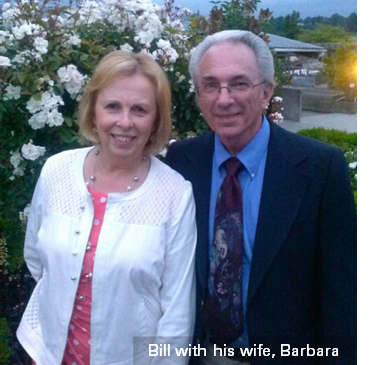 Bill Bennett of Vancouver, WA recently wrote to Deb Hickey: “I just wanted to tell you that I forward the newsletter to 45 individuals every month so that I can share all of the good you produce with others.”
Bill Bennett of Vancouver, WA recently wrote to Deb Hickey: “I just wanted to tell you that I forward the newsletter to 45 individuals every month so that I can share all of the good you produce with others.”
Bill “successfully completed his proton treatment” in 2011 at LLUCC. He told Deb, “I have no regrets and I’m very happy that I discovered this treatment. Thank you for all you do for us members—it is very much appreciated.”
Today, retired from the Union Pacific Railroad, Bill keeps busy around his property.
In the summertime, he maintains a large (25’ by 25’) vegetable garden. He is also a member of a car club and enjoys participating in car shows with his 1956 Chevy Bel Air. Bill is also a volunteer for the Vancouver Police Department, where he takes part in a neighborhood watch organization. “We patrol neighborhoods, parks and shopping centers and report any type of suspicious activity.”
In addition to forwarding the BOB Tales newsletter to friends and family, Bill also passes Bob’s book to others when he feels it is appropriate. “I have acquired extra copies of Bob’s book over the years, and any time I feel there is someone who may benefit from it, I pass it on.”
.gif)
We have been producing BOB Tales newsletters monthly for the past 15 years. Over the years there have been some important articles that many new members have not seen, and some older members may have forgotten. So, we decided to periodically re-run some articles from past newsletters. This one is from February 2003.
Interesting Survey on Side Effects
Prostate Pointers created a database where former patients may enter the side effects (impotence, incontinence, bleeding, etc.) they experienced from their primary treatment. Men making treatment decisions may browse the results to help them assess the risks of each treatment.
To date (February 2003), 969 former prostate cancer patients have entered data. Treatments represented in the survey include radical prostatectomy, radical prostatectomy with radiation, proton therapy, seed implants, high-dose seed implants, external beam radiation plus seed implants, hormonal therapy (alone or
with orchidectomy (testicle removal), cryotherapy, and non-hormonal chemotherapy.
Note: Just 13 proton patients have entered their data thus far, so it is difficult to draw conclusions this early.
Interestingly, 55 percent of the 280 radical prostatectomy patients (RP) reported urinary incontinence three years after surgery (more than half!), versus none of the 13 proton patients. Sixty-four percent of the RP patients reported problems with impotence versus 23 percent, or three, of the proton patients. The study also compares conditions such as blockages, strictures, nocturia (waking up at night to urinate), and others.
BOB COMMENT: We recently visited the Prostate Pointers website, and while it still exists, we could not access the side effects database. If any of our readers have information on this, please let us know. In the meantime, three surveys recently conducted on former prostate cancer proton patients, including a survey by Dobson DaVanzo, an independent health economics and policy consulting firm, showed results similar to those reported above. In 2014, 4,000 proton patients were surveyed and the results are as follows: Fewer than 3 percent reported recurrence of their prostate cancer compared to 10 – 30 percent of men who had surgery and 11 percent of men treated with conventional radiation (within eight years). Proton patients were extremely satisfied with their results: 98 percent said they made the best treatment decision for themselves; 96 percent have recommended proton therapy to others; 85 percent reported their quality of life was same as, or better than, before their treatment. Learn more.

A Note from Deb Hickey
In the “Spotlight on Members” section above, we included a few excerpts from recent messages we received from prospective proton patients, most of whom have since become members. Their messages included words of appreciation for our support and guidance as they were facing an unknown, confusing, and fearful future. To notes like these, I typically reply, “That’s what we do!” And, I receive follow-up messages saying, “You have gone way beyond that.” Nothing makes me happier than knowing that we are helping people.

As you know, we charge no dues for membership in our group. If you feel our efforts have been of value to you in any way and you would like to acknowledge the BOB, I encourage you to 1) contribute to the Loma Linda University Cancer Center for proton research or Vision 2020, and/or 2) put Loma Linda University Health in your estate plan as a way of saying “thank you” for all you have received from the BOB’s association with Loma Linda University Health.
If you are interested in supporting proton research, I encourage you to make a gift to the Robert J. Marckini Endowed Chair. Once funded, the interest on the principal from this chair will be used to pay for a researcher, assistant, and supplies to fund important basic and clinical proton research.
Contribution Information
Make a Future Gift:
Contact Todd Mekelburg at the Office of Planned Giving at Loma Linda University Health at 909-558-4553 or email [email protected].
Donate to the Marckini Chair:
- Send a check made out to “LLUCC Proton” to Loma Linda University Health, Office of Philanthropy, P.O. Box 2000, Loma Linda, CA 92354. Memo line: “Marckini Chair.”
- Donate online or call Elvia DeHaro at 909-558-5010.
Other Ways to Give:
Contact Matt Miller at the Office of Philanthropy at Loma Linda University Health at 909-558-3284 or email [email protected].
A Note From Deb Hickey Cont.
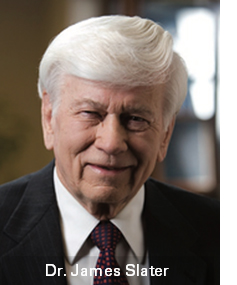 As a result of Dr. James Slater’s pioneering work, there are 22 proton treatment centers in the U.S. and many overseas. And, the number of proton centers in the U.S. is expected to grow to 29 by 2018. Patients being treated at centers around the world have that privilege largely because of Dr. Slater.
As a result of Dr. James Slater’s pioneering work, there are 22 proton treatment centers in the U.S. and many overseas. And, the number of proton centers in the U.S. is expected to grow to 29 by 2018. Patients being treated at centers around the world have that privilege largely because of Dr. Slater.
According to an article in the Digital Journal, “The surge in the number of proton centers can be attributed to the various advantages associated with proton therapy, such as more directed impact on the tumor, increased control and reduced negative impact on healthy tissue.” This is exactly what Dr. Slater believed more than 30 years ago.
I had the great privilege of meeting Dr. Slater at the 20th anniversary celebration of the Loma Linda University Cancer Center. I will never forget our first interaction. He extended his hand and with a warm smile, he said, “I’m pleased to meet you, Deb. I’m thankful for the great work you are doing.” I remember thinking, he is thankful to me? I paused to try and swallow the lump in my throat. When I spoke, my voice was shaky and I found myself fighting back tears. I said, “Dr. Slater, it is an honor to meet you.” I continued, “I want you to know how thankful I am to you for saving my father’s life.” Moments later, I realized that this incredible man … this brilliant doctor and scientist … this distinguished leader … also had tears welling up in his eyes. Of course, this prompted me to lose it completely as my tears flowed freely. I added, “It’s because of you that my father is alive and will get to meet his grandchild someday.” I don’t remember him saying anything more, but his face revealed a lot. To this day, I still can’t believe that a man of his prominence was so genuine and warm. I am convinced that all his pioneering work over the years was not just about improving technology, but rather improving technology to improve people’s lives. My gratitude for that man is immeasurable.
New Member and Wife Give Back
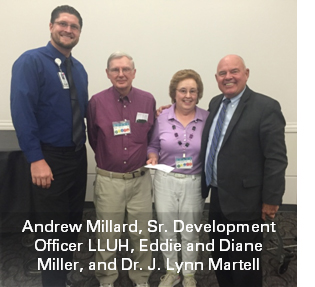 BOB member Edward Miller of Grand Junction, CO, recently finished proton treatment at LLUCC. Upon his “graduation,” he and his wife, Diane, made a generous gift to Vision 2020 at Loma Linda University Health (LLUH).
BOB member Edward Miller of Grand Junction, CO, recently finished proton treatment at LLUCC. Upon his “graduation,” he and his wife, Diane, made a generous gift to Vision 2020 at Loma Linda University Health (LLUH).
What is Vision 2020?
LLUH’s Vision 2020 is an ambitious vision for expansion, which encompasses several hospital, research, and educational projects planned to extend the facility’s reach throughout the next few decades.
“With Vision 2020 we will establish a new paradigm that begins with education, the foundation with which Loma Linda University was built,” LLUH President Richard Hart said. “It will allow us to expand our utilization of high technology in new innovative ways and provide scholarships and endowments with which we can attract the highest level of students and faculty.”
Through Vision 2020, LLUH plans to build a new adult hospital, expand the children’s hospital, add a satellite LLUH campus in San Bernardino, and build a new Discovery Center for medical research. In total, Vision 2020 is a $1.2 billion endeavor.
Why Eddie and Diane Chose Vision 2020
We asked Eddie why he chose to contribute to Vision 2020 following his proton treatment. Below is his response.
“Proton therapy for prostate cancer at LLUCC was a minor detour in my life, however some are not so fortunate. Throughout my experience at LLUCC, I thought a lot about the research and funding that goes into developing better treatment options, and ultimately, a cure for cancer. My dream is to find a cure, and eliminate cancer for future generations. However, to achieve that goal, it will take universities and hospitals like Loma Linda University Health, that are willing to invest the research, knowledge, experience, time, people, and funding to move in that direction. Diane and I wanted to help in any way that we could. I hope others will consider doing the same.”

Prostate Problems: Recognize the Warning Signs
In our newsletters, we have always noted the importance of taking charge of your own health. We commend our members for doing just that—not blindly accepting their doctor’s recommendation, but questioning, challenging, performing their own research—searching online, reading books and articles, and speaking with former patients representing the various treatment modalities, before making a treatment decision.
But what about men who don’t go to the doctor unless they are in serious distress? They are out there—and one of them may be your brother, son, or friend. You may want to forward this information to them.
Prostate cancer is the second most frequently diagnosed cancer in men, following skin cancer. More than 230,000 American men are diagnosed every year; nearly 30,000 die from it.
Common Symptoms of Prostate Cancer
- Trouble urinating, increased frequency, weak flow, pain
- Difficulty getting an erection
- Painful ejaculation
- Blood in urine or semen
- Pain with bowel movements
- Pain or stiffness in hips, lower back or upper thighs
The Most Common Symptom
- No symptoms at all
Risk Factors
- Advancing age
- African American descent
- Family history
- Obesity
- Diet
To Screen or Not to Screen?
In the past, doctors recommended that all men over a certain age be screened for prostate cancer with a PSA blood test and digital rectal exam. But as you know, everything changed in 2012 when the United States Preventive Service Task Force (USPSTF) recommended stopping PSA testing because they felt it led to unnecessary treatment.
BOB COMMENT: We believe the problem is not over diagnosing prostate cancer, it’s over treating prostate cancer. Depending on the patients’ PSA level, Gleason score, T-score, age, general health, treatment should vary accordingly—some may require no treatment at all and may benefit from active surveillance. We encourage all men to consider asking their doctor for a PSA test at their annual physical beginning at the age of 50, or younger if you are in a high-risk group.
What if it is cancer?
A diagnosis of prostate cancer is not a death sentence. Most newly diagnosed cancers are curable. In some cases, doctors may suggest “active surveillance,” or watchful waiting, which means not treating the cancer directly, but carefully monitoring it, and following a healthier diet and lifestyle. Treatment is started only if justified.
BOB COMMENT: You’ve been there. And you took charge of your own health. Consider passing along what you’ve learned to your brother, son, or friend(s). Encourage them to learn what they need to know about the risks of developing prostate cancer. Remind them about taking responsibility for tracking their PSA. If cancer is diagnosed, encourage them to fully understand their stats and to evaluate each treatment option. Perhaps most important, encourage them to speak with former patients—at least 10 representing each treatment option they are considering.
Drugs, Supplements and Side Effects
In a recent video, Dr. Charles Myers spoke about serious problems connected with drugs, supplements, and side effects. He pointed out that all drugs have side effects and there is always a trade-off between using the drug for the patient’s benefit and dealing with potential side effects.
Over-the-Counter Drugs
Even over-the-counter (OTC) supplements have risks. Myers tells us to be careful when buying OTC supplements because companies that make them are not held to the same manufacturing standards as those making prescription medications.
He used vitamin D3 as an example. Dr. Myers is a big fan of vitamin D. He believes it has important cancer-fighting properties. Yet the quality of OTC vitamin D varies widely. Some of his patients were coming to him with vitamin D deficiency even though they were taking vitamin D purchased at their local health food stores. “We followed their blood level, and fewer than half the medications appeared to have any vitamin D in it, or if there was, none of it ever got into the patient.”
Contaminated Supplements
He also pointed out that there can be serious side effects connected with contamination of OTC supplements. “The literature is full of case after case of people with serious side effects from supplements because of contamination. This is a serious problem in the supplement industry,” he said. In the past year, Dr. Myers reports he had two patients with severe liver damage from supplements that were contaminated.
He went on to say, “My view of supplements is, they’re drugs all right, but they’re dirtier, less pure, and there isn’t the same safety testing for most supplements as there is for prescription drugs. I view supplements as inherently less safe.”
Drug Interactions
Another problem is drug interactions. “Supplements are drugs too,” he noted. “Interactions between supplements and prescription drugs are a serious problem that I deal with on a monthly basis.”
People believe what they read in advertisements or on the Internet. “The Internet is an extraordinarily bad source of information about the safety of supplements and the dangers of prescription drugs.”
Bottom Line
Dr. Myers suggests taking only the drugs you need to take, and take the lowest dose possible. We know from past newsletters that he is a fan of the brand, Life Extension, for quality OTC supplements.
New “Live It” Videos
Loma Linda, CA has been designated a “blue zone” by National Geographic as one of the five communities in the world with the longest living inhabitants. Residents of Loma Linda are 10 times more likely to make it to 100. So, perhaps we should pay attention to how they live their lives.
Recently, Loma Linda University Health (LLUH) began including a new video series called “Live It” in their weekly newsletter to staff, students, and friends. The videos include tips for longer and healthier living. Doctors and other hospital staff discuss ways to improve your lifestyle, cleverly using cartoons to help make their points. We will occasionally share these videos with our readers as appropriate. The videos are about two minutes in length. Take a look at the two on the following page.
Video: Live Longer with a Vegetarian Diet
Want to decrease your chances of chronic disease? Researchers at LLUH have found that a vegetarian diet does just that.
Researchers discovered vegetarians are 22 percent less likely to develop colorectal cancers as well—the second leading cause of cancer death in the U.S.
Watch the video to learn more. And, get some simple tips for changing your diet today.
Video: Reduce Hip Fracture by Eating Legumes
As we grow older, our bones naturally lose strength and become more brittle. Weak bones can be caused by lack of exercise, smoking, calcium deficiency, and vitamin C and D deficiency. While the risk for hip fractures increases for those over the age of 65, there are steps you can take to strengthen your bones.
Researchers at LLUH studied the diets of 96,000 people to discover how to reduce the risk of hip fracture. They learned that eating legumes was instrumental in strengthening bones to help minimize hip fractures.
Watch the video for details and learn some easy ways to add legumes to your diet.
The Drink that is Bad for Your Blood Pressure
Kevin Soden, MD asks the question: Which is more likely to cause higher blood pressure, chugging colas or drinking coffee? The answer is cola. A recent study showed that one cola a day was associated with a 15 percent higher risk of hypertension. And the more cola you drink, the higher the risk, even if the cola is diet cola.
Researchers concluded that since coffee didn’t have the same impact on blood pressure, it’s probably not the caffeine that’s causing the problem. It may be the corn syrup or the coloring agent. Having said that, caffeine can temporarily increase blood pressure for those who are sensitive to it.

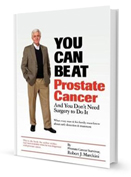
Member Takes it to the Media
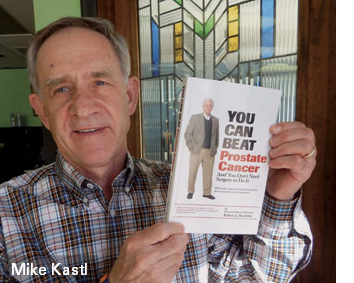 BOB member Mike Kastl likes to make sure he’s doing all he can to spread the word about proton therapy for prostate cancer. On top of that, he wants to make sure everyone knows what lead him to proton therapy in the first place—Bob Marckini’s book, “You Can Beat Prostate Cancer: And You Don’t Need Surgery To Do It.” In a recent article in the Edmond Sun, Mike says the book convinced him to undergo proton therapy.
BOB member Mike Kastl likes to make sure he’s doing all he can to spread the word about proton therapy for prostate cancer. On top of that, he wants to make sure everyone knows what lead him to proton therapy in the first place—Bob Marckini’s book, “You Can Beat Prostate Cancer: And You Don’t Need Surgery To Do It.” In a recent article in the Edmond Sun, Mike says the book convinced him to undergo proton therapy.
In the article titled, “Kastl Healed of Prostate Cancer; Now a Believer in Proton Therapy,” Mike says he opted not to undergo surgery or conventional radiation because he wanted an option that would be non-invasive and not damage surrounding tissue. Mike was the first patient treated at the ProCure Proton Therapy Center in Oklahoma City in 2009.
Now, Mike Kastl refers to himself as a “proton teacher.” Why? “I believe in it,” Kastl says, “It’s the real deal.” Read the full article.
The Book on Amazon
The book is still hovering between the No. 3 and No. 4 position on a search for “prostate cancer” on Amazon.com out of more than 30,000 search results. It has 249 reader reviews—still more than any other book in the top 50.
 Was Bob’s book helpful to you? Have you written an Amazon review yet? If not, please post a review today and help us get to 250.
Was Bob’s book helpful to you? Have you written an Amazon review yet? If not, please post a review today and help us get to 250.
The more quality reviews on Amazon; the higher the book ranks in their search engine; the easier it is for newly diagnosed men to learn about proton therapy for prostate cancer. Once you are logged into your Amazon account, click here and click “Create your own review” button. Don’t forget to rate the book from one to five stars!
Buy Online or in Bulk
Online: Paperback: $19.00--•--Kindle: $9.99--•--NOOK Book: $9.99--•--Apple iBook: $9.99
In Bulk: Conctact us for a discount price list. Proceeds from book sales support proton therapy research through the Robert J. Marckini Endowed Chair at LLUCC.
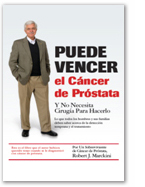
Thanks to the generosity of BOB member Pierre Rogers, the book has been translated into Spanish and is available to the Latin community around the world! Buy it in print or buy the eBook.
The book will soon be available in Spanish on Amazon in the U.S., Spain, France, Germany, and Italy.

Did You Know?
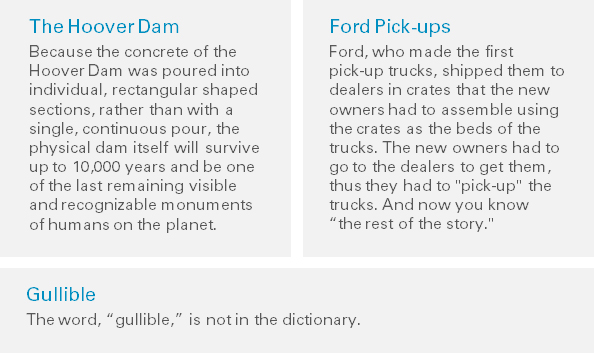

Last Month’s Brain Teaser
From the following group of letters, remove twelve letters so the letters that remain, in order, will spell a familiar word:
TAWFEALMVIELLIEATRTWEORRSD
Answer: Removing TWELVELETTERS from TAWFEALMVIELLIEATRTWEORRSD leaves AFAMILIARWORD.
Note that we received dozens of emails from readers who corrected us, telling us that there are, in fact, 13 letters that must be removed. Had we written “12” instead of “twelve,” that would have been correct! The two words “TWELVE LETTERS” actually have 13 letters.
 Winner: Congratulations to Richard Williams of Sandpoint, ID! Richard underwent proton therapy at LLUCC in 2007. When we told him he was the brain teaser winner, he wrote in an email to Deb Hickey, “I want you to know what a great asset you are to your father and all that he does for proton therapy. It is a pleasure to know both of you.”
Winner: Congratulations to Richard Williams of Sandpoint, ID! Richard underwent proton therapy at LLUCC in 2007. When we told him he was the brain teaser winner, he wrote in an email to Deb Hickey, “I want you to know what a great asset you are to your father and all that he does for proton therapy. It is a pleasure to know both of you.”
Richard’s latest PSA is 0.16 and he’s pleased. He and his wife are retired and looking forward to warmer weather. Richard’s favorite hobby is working in his wood shop on various home projects. He is also actively involved in the
Marine Corps League in Sandpoint, a major veterans support organization. And, he participates in programs at his local church.
Congratulations again, Richard. Your signed copy of Bob’s book is on the way.
New Brain Teaser
Say that a hundred pennies are on a table. Ninety of them are heads and ten are tails. With your eyes closed, can you separate all the coins into two groups so that each group has the same number of tails?
This sounds impossible, but it can be done … and quite easily if you open your mind.
Send your brain teaser answers to [email protected] for a chance to win a signed copy of Bob’s book.
Our Society is Doomed
These are true stories.
Story 1: I handed the new teller at my bank a withdrawal slip for $400 and said, “May I have large bills, please?” She looked at me and said, “I’m sorry, sir, but all our bills are the same size.”
Story 2: My daughter went to a local fast-food store and ordered a taco. She asked the person behind the counter for “minimal lettuce.” He said he was sorry, but they had only iceberg lettuce.
Story 3: The stoplight on the corner buzzes when it’s safe to cross the street. I was crossing with a co-worker. She asked if I knew what the buzzer was for. I explained that it signals blind people when the light is red. Appalled, she responded, “What on earth are blind people doing driving?”
Story 4: As part of Jay Leno’s “Jaywalking” series, Jay asked a woman on the street, “Who was the first man to walk on the moon?” The woman confidently answered, “Armstrong!” Jay then asked, “Do you know his first name?” The woman answered, “Louie!”
Story 5: In another “Jaywalking” interview, Leno asks a woman, “What was the Gettysburg Address?” The woman answered, “I’ve heard of it … but I don’t know the exact address.”
Story 6: In another “Jaywalking” interview, Leno asks a woman, “What does the ‘DC’ stand for in Washington, D.C.?” Scratching her head, the woman responded, “Da Capital?”
You can’t make this stuff up. Stay alert! These people walk among us … and they vote!
Golf Truisms
A good golf partner is one who’s always worse than you are. That’s why I get so many calls to play with friends.
It’s amazing how a golfer who never helps out around the house will replace his divots, repair his ball marks, and rake his sand traps.
It’s easier to get up at 6:00 a.m. to play golf than at 10:00 a.m. to mow the grass.
Every time a golfer makes a birdie, he must subsequently make two double bogeys to restore the fundamental equilibrium of the universe.
If you really want to get better at golf, go back and take it up at a much earlier age.
You can hit a two acre fairway 10 percent of the time and a 2-inch branch 90 percent of the time.
It’s not a gimme if you’re still away.
A golf match is a test of your skill … against your opponent’s luck.
Don’t ever buy a putter until you’ve had a chance to throw it.
When your shot has to carry over a water hazard, you can use either one more club or two more balls.
Quote of the Month
“If you do not take an interest in the affairs of your government, then you are doomed to live under the rule of fools.” —Plato

You Can Do It
As mentioned in the opening memo, last month on a flight from Fort Lauderdale, FL to Providence, RI, Bob and Pauline Marckini sat next to a fascinating man who told them his story.
In 2008, Roger Wright was 47-years-old and weighed 277 pounds. He was also a diabetic, with extremely high blood pressure. He told of his annual New Year’s resolutions. They had been the same, year after year: To lose 50 pounds, to run the Boston Marathon, and to raise money for cystic fibrosis research. His beloved niece, Julia, suffered from this dreaded disease.
“I couldn’t run 10 yards before collapsing, totally out of breath,” he said. “My 10-year-old niece, Julia, weighed only 67 pounds and she couldn’t catch her breath either.” And this taunted him. “I’d give her my own lungs if I could,” he said.
On June 8, 2008, Roger enlisted the help of his friend, Rick, a trainer. He told Rick of his goal to lose 50 pounds, run the Boston Marathon, and raise $3,000 for the Cystic Fibrosis Foundation. Rick wouldn’t take any money for his services. He said, “The only payment I want is your total commitment to do everything I ask you to do.” Roger agreed.
With Rick’s guidance, Roger began to pay attention to what he was eating. “I looked at the side of the food/beverage container for the first time in my life,” he said, “and learned about calories, proteins, fats, and carbohydrates. I never realized what I was eating. I was blaming my morbid obesity on low metabolism, the ‘fat gene,’ endomorphism, inability to exercise, etc.” He further said, “I even blamed clothing manufacturers for making clothes smaller and complained that the washer/dryer was shrinking all my clothes.”
Under his trainer’s guidance, he began walking, then running every day, rain or shine, increasing his distance daily.
On Monday, April 20, 2009, 10 months from the date he started his program, Roger had lost 114 pounds. He weighed 163 pounds and ran the Boston Marathon in 4:45. He also raised $11,000 for cystic fibrosis research.
Since that time, Roger has run dozens of marathons. He achieved his goal of running a marathon in less than four hours, and he’s raised more than $100,000 for cystic fibrosis research.
Roger chronicled his journey in a video. It has since gone viral with almost 8 million views.
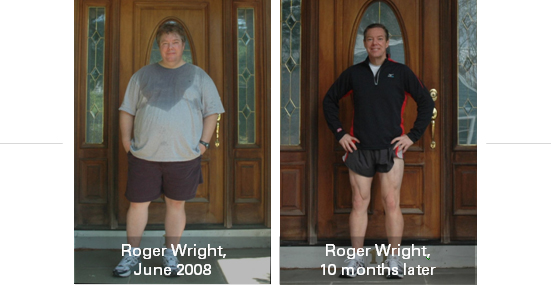
Quoting an old cliché, he said, “I used to live to eat. Now I eat to live.” He exercises every day; he carefully watches his caloric intake; he drinks lots of water; and he says he’s never hungry.
 Julia is now 17, still suffering from CF, and takes a lot of medications. She still spends much time in the hospital and with doctors and physical therapists. “Every day is a struggle for her, and she is on a waiting list for a lung transplant.” Roger said, “You would think the disease defines her. That is not true. Even though she misses a lot of school, she’s at the top of her class academically; she has a beautiful singing voice; she plays the guitar and ukulele; and has been in many school plays and concerts. She is on the high school sailing team and is very active at her school. She plans to attend college to study filmmaking. It’s rare to find her without a smile on her face.
Julia is now 17, still suffering from CF, and takes a lot of medications. She still spends much time in the hospital and with doctors and physical therapists. “Every day is a struggle for her, and she is on a waiting list for a lung transplant.” Roger said, “You would think the disease defines her. That is not true. Even though she misses a lot of school, she’s at the top of her class academically; she has a beautiful singing voice; she plays the guitar and ukulele; and has been in many school plays and concerts. She is on the high school sailing team and is very active at her school. She plans to attend college to study filmmaking. It’s rare to find her without a smile on her face.
Roger has set up a website where you can donate to Cystic Fibrosis research: http://www.RFME.org. RFME refers to “Running for My Existence.” His viral video, which we mentioned earlier, is titled, “The most inspiring video you will ever watch.”
Get some Kleenex and watch the video. You’ll be glad you did.
Roger Wright’s incredible story is a lesson for us all: Through hard work and determination, the human spirit can accomplish just about anything. Nelson Mandela was right, “It always seems impossible, until it’s done.”
Low PSAs to all!
Bob Marckini and Deb Hickey
To print the BOB Tales newsletter or view the newsletter with a larger font size, click here for the PDF file.
NO MEDICAL ADVICE: Material appearing here represents opinions offered by non-medically-trained laypersons. Comments shown here should NEVER be interpreted as specific medical advice and must be used only as background information when consulting with a qualified medical professional.

